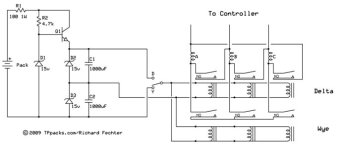Thud
1 MW
Mike,
Really not as much as you would think.
surplus center parts;
6 sprockets,chain,master & 1/2 links. rounded up $40
vxb bearings $12
sdpi (gates sprockets & belt) $47 (most costly part not considering labor)
misc screws & bolts $10
value of stock on hand $15
add shipping charges $30
Thats $155.00 ish in parts
Estimated 30 hours of actual design & build time on the prototypes.
So the suggested retail price for a prototye unit would come in near 1K.
I could whole sale them for way less. Not that I need any additional projects ATM
Really not as much as you would think.
surplus center parts;
6 sprockets,chain,master & 1/2 links. rounded up $40
vxb bearings $12
sdpi (gates sprockets & belt) $47 (most costly part not considering labor)
misc screws & bolts $10
value of stock on hand $15
add shipping charges $30
Thats $155.00 ish in parts
Estimated 30 hours of actual design & build time on the prototypes.
So the suggested retail price for a prototye unit would come in near 1K.
I could whole sale them for way less. Not that I need any additional projects ATM



